We recently received an incredibly kind invitation to visit Chihuly Garden and Glass in Seattle. It was an absolutely amazing experience and we are extremely grateful to have had such a wonderful opportunity.
The history of glass art goes back to at least 1500 BC, when the Ancient Egyptians made glass figures and beads. The Phoenicians made glass as well, and around the time of the birth of Christ glass-making techniques were in development throughout the Ancient world. (Read more about the history of glass here.)
The Victorian era created one of the most impressive achievements in glasswork the world has ever seen, when Joseph Paxton (under the patronage of Prince Albert) created the Crystal Palace to house the Great Exhibition of 1851. More than a century later subsequent Worlds Fairs were still following in the footsteps of this monumental event, and the amazing building which housed it inspired countless glass houses and conservatories throughout the world.
When we visited the Chihuly Garden and Glass Gallery in Seattle, we learned about how the ethereal beauty of such glass houses motivated the artistic genius of Northwest glassworker Dale Chihuly.
The gallery we visited in Seattle showcases his artwork at the base of the Space Needle, on the footprint of the 1962 World's Fair.
"…Chihuly is seen here admiring the Royal Botanic Gardens, Kew, near London, which is one of his favorite conservatories. His appreciation of this nineteenth-century architecture comes in part from the use of hand-blown glass to make all the windows, something extraordinary considering the size of the buildings.
In 2005, thirty years after this photo was taken, Chihuly was invited to show his artwork at Kew."
The first room in the gallery, titled "Glass Forest" was inspired by the Ware Collection of Blaschka glass models of plants at Harvard University. Gabriel (who has seen the Ware Collection in person) had told me a little about this astonishing compilation of botanically-perfect glass flower models; it was fascinating to see a modern artist's interpretation of nature's forms.
Coming out of the Glass Forest room, the next exhibit was the Northwest room, where traditional Native baskets are juxtaposed against Chihuly glasswork which took inspiration from them. Native basketwork has had an appeal to me ever since I saw an 1895 photo of women shopping for baskets on the beach in Port Townsend —a photo which inspired a scene in my book, First Wheel in Town. (The photo, more information about it, and further pictures of Native baskets can be seen here.) Just a week before visiting the Chihuly gallery I had seen a collection of Native basketwork at the Suquamish Museum when I visited the community for Chief Seattle Days, honoring the Duwamish chief for whom Seattle is named. Naturally, I took a special interest in this room.
I think my favorite exhibit at the gallery was the Sealife Room. Beautiful glass kelp fronds rise up towards the ceiling in shades of blue and vibrant three-dimensionality which no pictures can do justice. Their twists and turns evoke the motion of waves, and the glass truly seems to move. Cuddled within their fronds dwell golden glass sea animals: chambered nautilus, rays, sea urchins and anenomes.
When we went into the Ikebana and Float Boat room, I told Gabriel about ikebana I had seen when I lived in Japan. I pointed out how impressively Chihuly was using ikebana techniques to arrange his glasswork. Ikebana always has three elements: a tall upright element representing the sky, a middle (often rounded or curved) element representing the earth, and a low element representing man. It was truly charming to see these principles applied to glass.
All the rooms at the glass gallery are incredibly beautiful. Perhaps the single-most impressive room is the airy Glasshouse. Inspired by London's Crystal Palace and St. Chapelle in Paris, this room houses a 100-foot long hanging sculpture.
Later that night, when we were back at home and drifting off to sleep, I thought back on the Glasshouse and suddenly realized something that —incredibly— did make me even more impressed: the whole structure is set up according to the rules of ikebana, with the Space Needle representing the upright element of heaven, the glorious glass sculpture representing earth, and we tiny humans admiring it from below representing man.
Outside the Glasshouse is a beautiful flower garden, where Chihuly's magnificent glasswork harmonizes with the arts of nature. This garden has been declared a certified wildlife habitat by the National Wildlife Federation, and is a lovely place of peace.
As part of our invitation to visit the gallery, we also received the very kind gift of lunch at the gallery restaurant, The Collections Café. The meal was superb, and the surroundings delightful. The café takes its name from the way it showcases Dale Chihuly's personal collections of artifacts ranging from inkwells to shaving brushes. A guide to the collection bears the quote by Dale Chihuly, "I love to find the beauty in everyday objects." It reminded me of Victorian philosopher William Morris' statement, "Have nothing in your houses that you do not know to be useful, or believe to be beautiful."
Gabriel and I are strong believers in the elevating and inspirational nature of beauty, especially the beauty of every day items. We deeply enjoyed seeing how such small things had inspired the great art we were privileged to view in Chihuly's glass gallery.
Throughout our whole visit, we were treated with overwhelming kindness by the gallery staff. In the Sealife room, a beautiful young woman who worked for the gallery smiled warmly at me, then told me my hat was lovely. She asked if it had been designed by a local artist who specializes in millinery. Charmed by the sweet compliment, I explained that I had made it myself, using an antique Victorian hat as inspiration.
At the café a pair of ladies on the staff admired my dress; one of them said she had seen pictures of Victorian dresses but had never seen one on a living woman before. I explained how I sew all my clothes by hand, and how important it is for me to engage with history in this way. We chatted for so long I felt guilty for distracting the kind hostesses from their duties so I made apologies and excused myself, but not before my heart had been warmed by their interest and enthusiasm.






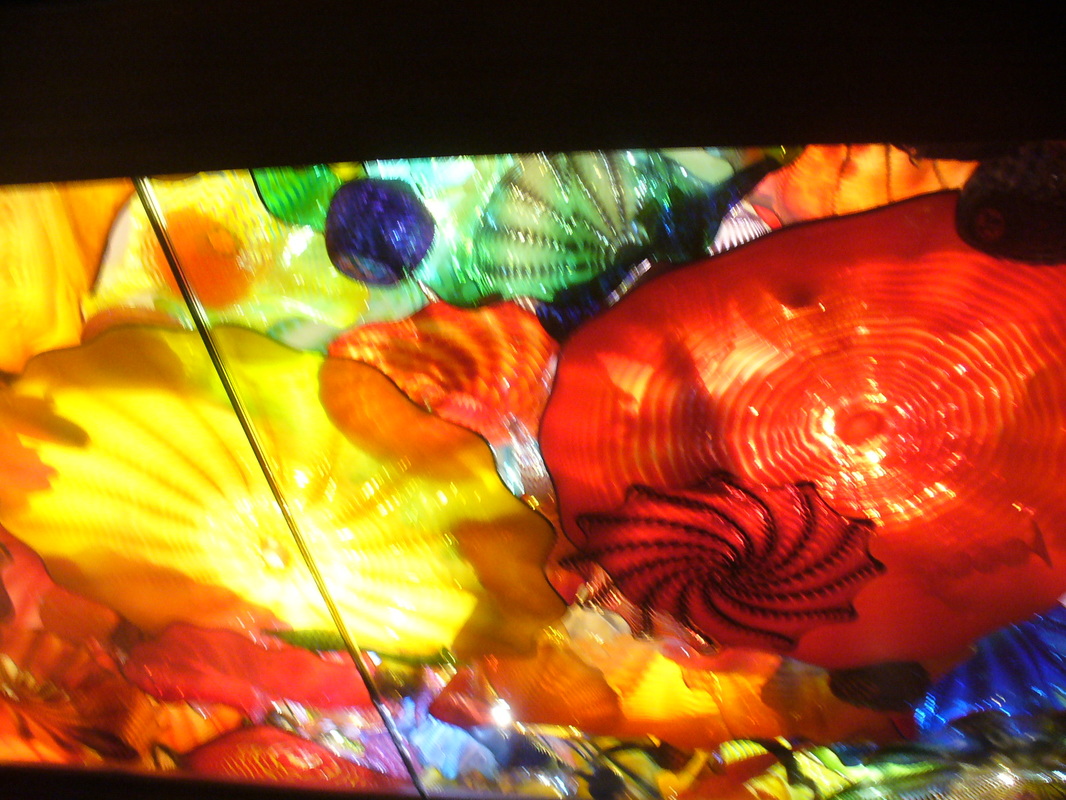

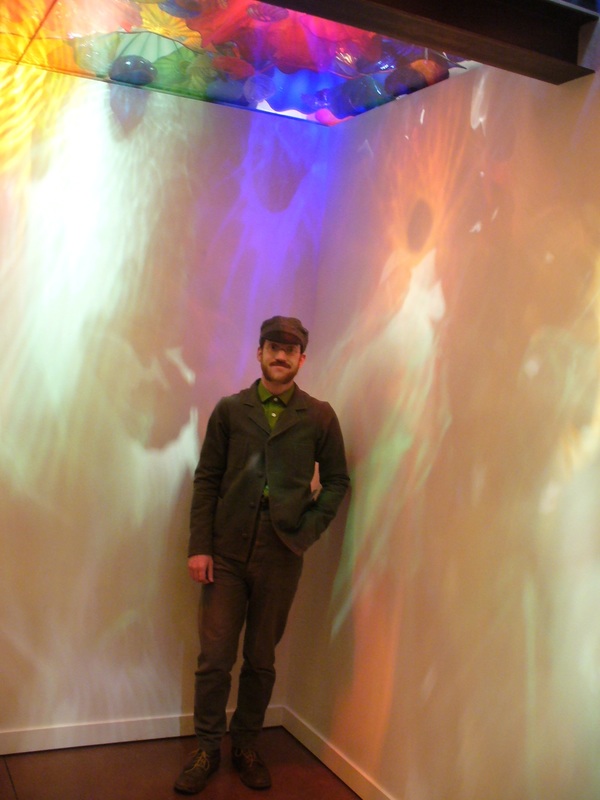


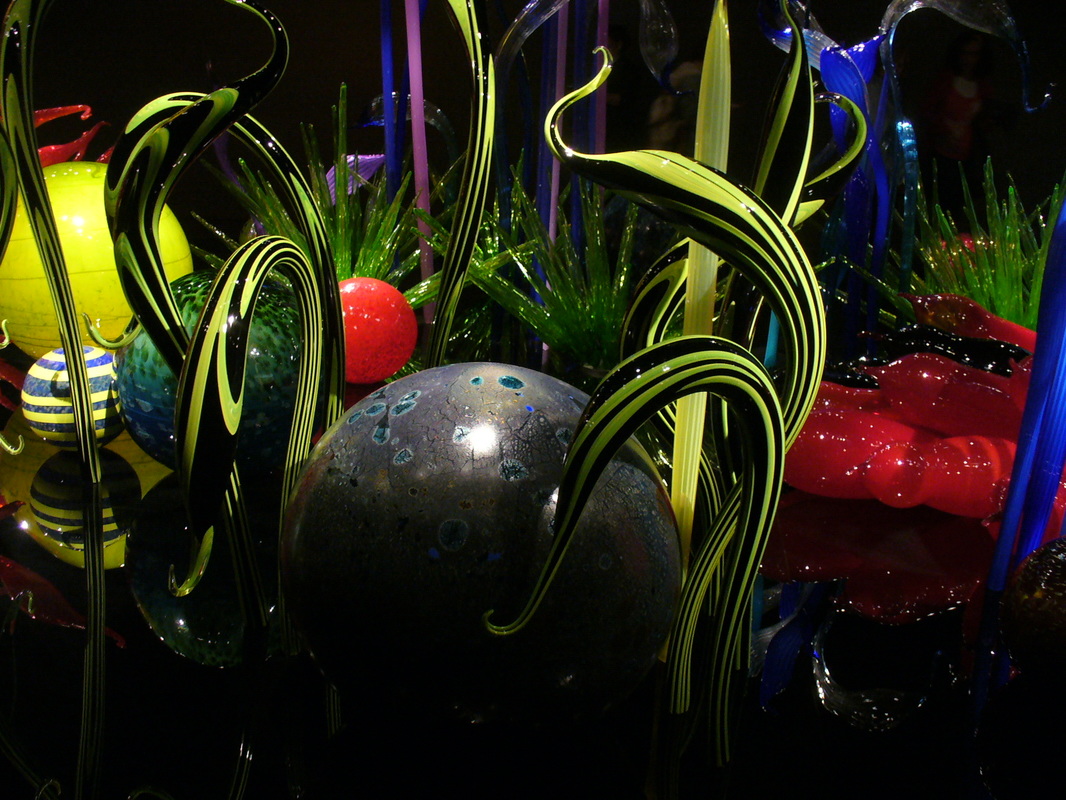
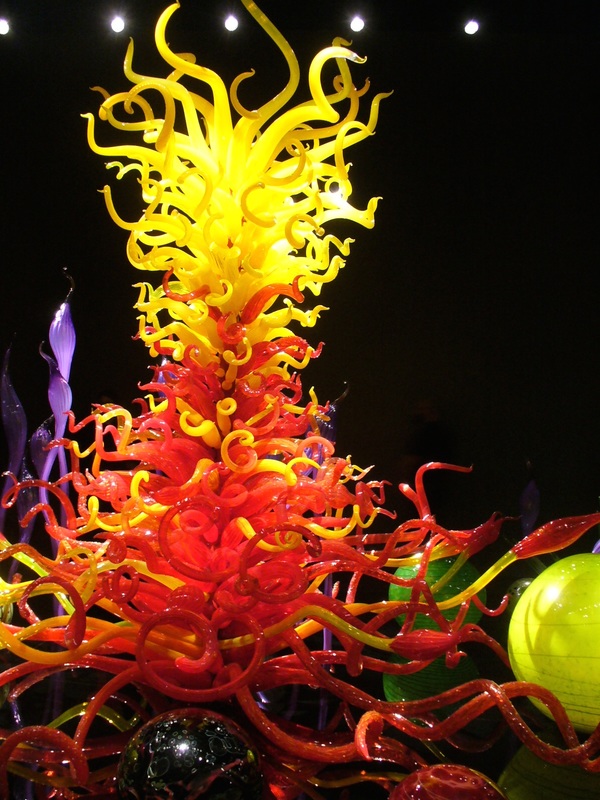
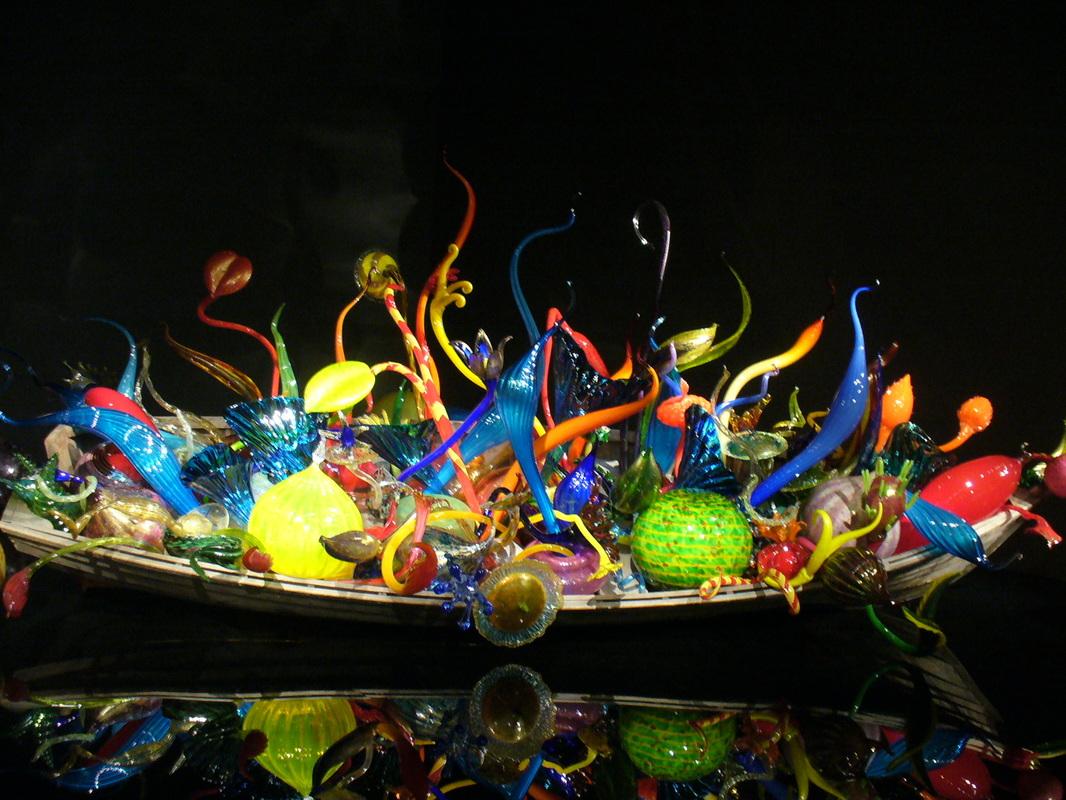


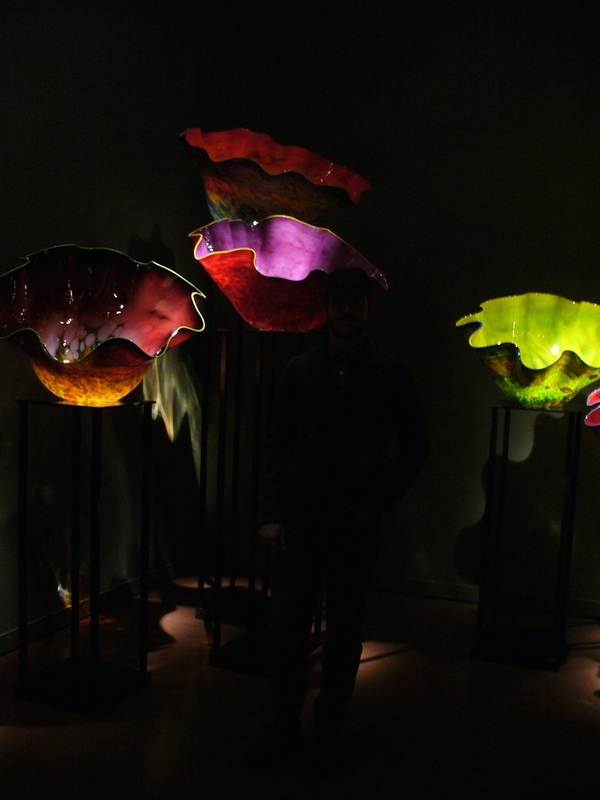


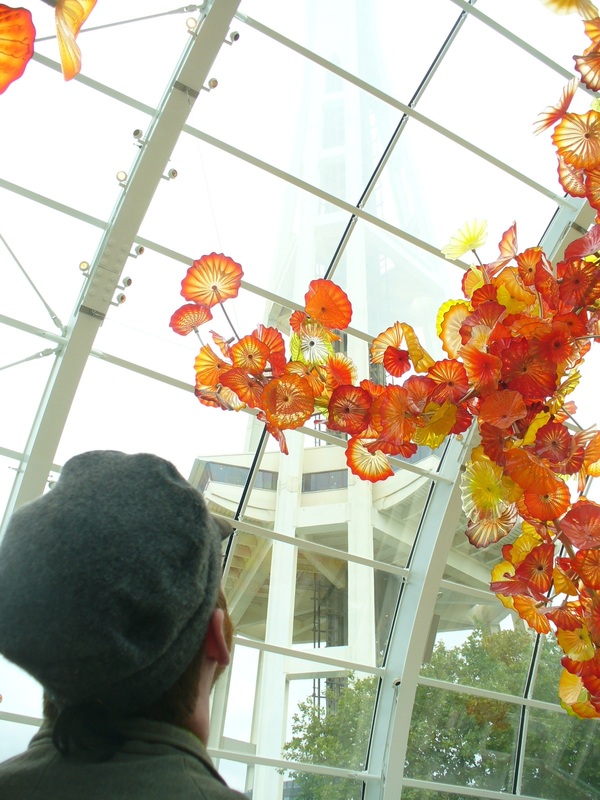

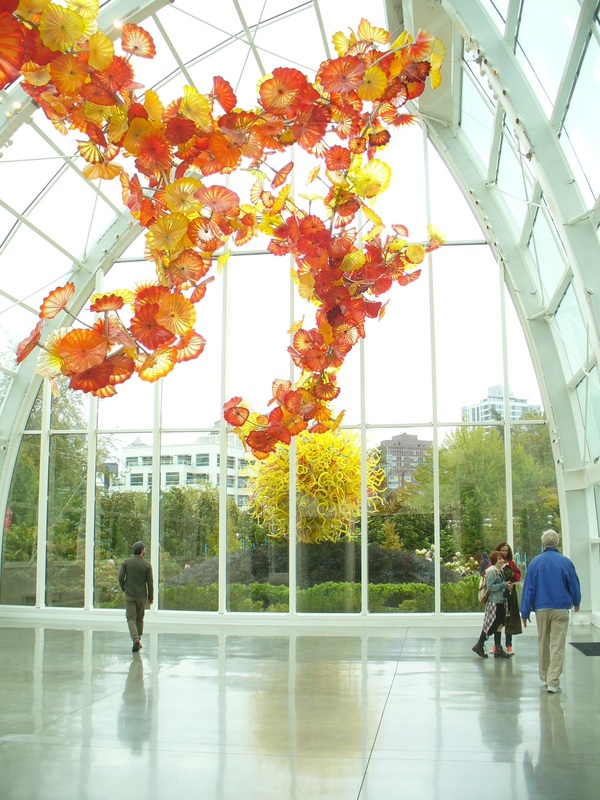
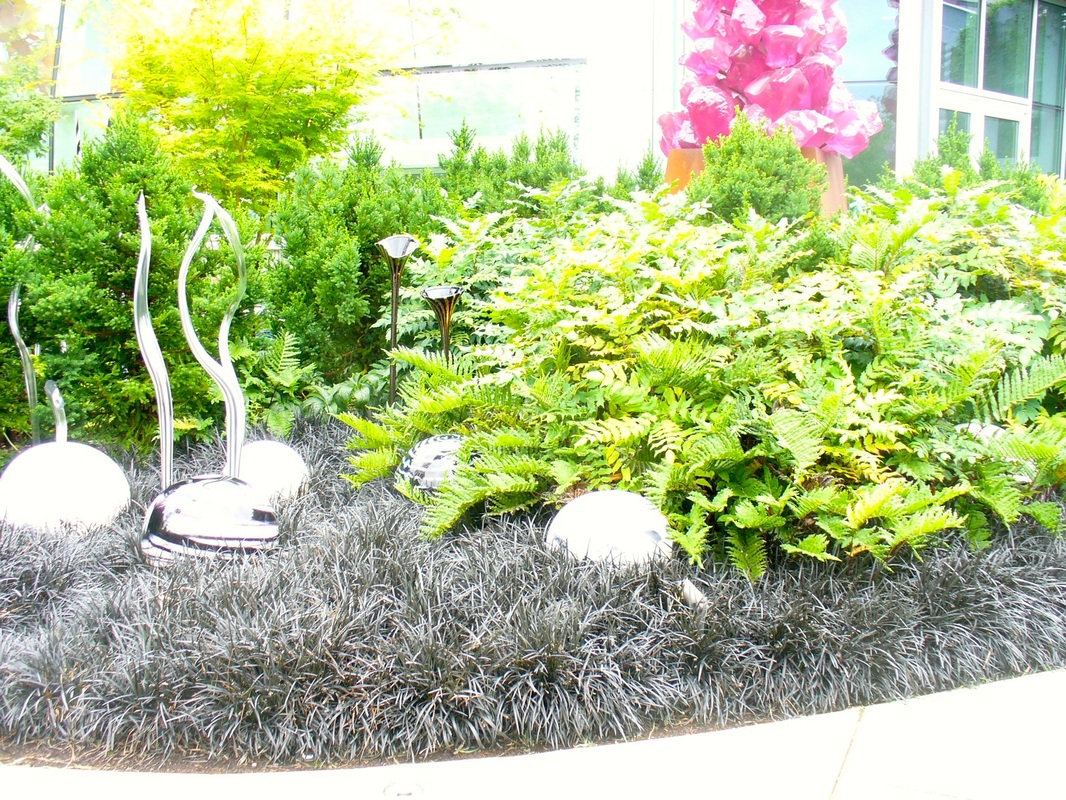




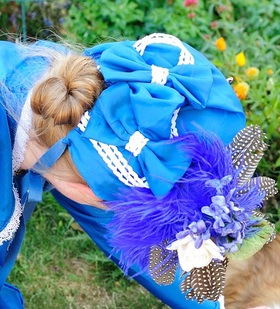
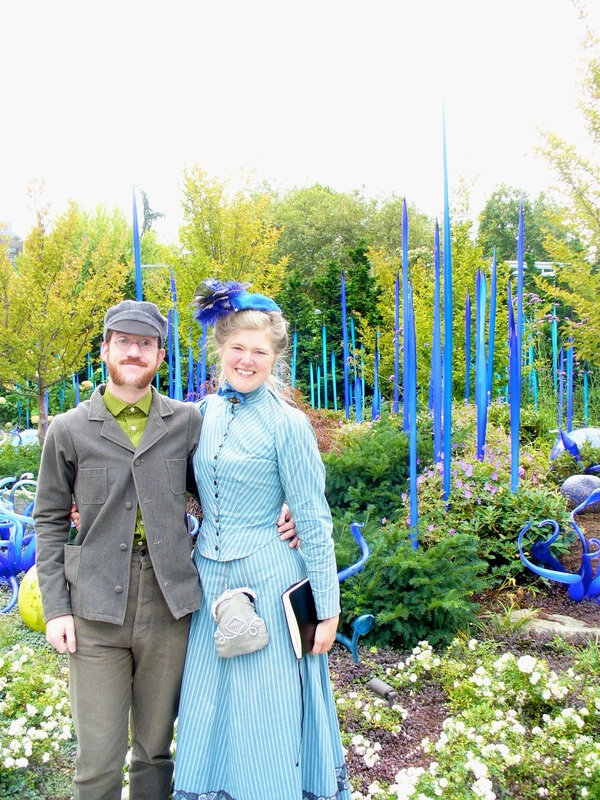
 RSS Feed
RSS Feed